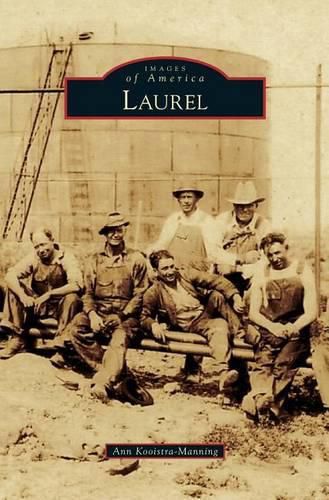Readings Newsletter
Become a Readings Member to make your shopping experience even easier.
Sign in or sign up for free!
You’re not far away from qualifying for FREE standard shipping within Australia
You’ve qualified for FREE standard shipping within Australia
The cart is loading…






This title is printed to order. This book may have been self-published. If so, we cannot guarantee the quality of the content. In the main most books will have gone through the editing process however some may not. We therefore suggest that you be aware of this before ordering this book. If in doubt check either the author or publisher’s details as we are unable to accept any returns unless they are faulty. Please contact us if you have any questions.
Early Laurel, like many Montana frontier towns, was shaped by tenacious settlers who struggled to carve a living from a harsh, often unforgiving landscape in the wake of the Indian Wars. Laurel started as little more than a railway station and a handful of businesses serving railroad workers, farmers, and ranchers in the early 1880s. Irrigation projects soon transformed the dry, dusty prairies along the Yellowstone River near Laurel into productive farmlands. Homesteaders flocked to the valley. By 1908, Laurel had grown into a bustling shipping and servicing center for three major railroads and boasted the largest rail yard and roundhouse between Seattle and St. Paul. In the 1920s, it became a jumping-off point for tourists destined for Yellowstone Park. A decade later, Laurel staked its claim in the region’s emerging oil industry when the Laurel Leaf refinery was built. This small, unassuming town has played a vital role in the development of the Yellowstone River Valley and beyond.
$9.00 standard shipping within Australia
FREE standard shipping within Australia for orders over $100.00
Express & International shipping calculated at checkout
This title is printed to order. This book may have been self-published. If so, we cannot guarantee the quality of the content. In the main most books will have gone through the editing process however some may not. We therefore suggest that you be aware of this before ordering this book. If in doubt check either the author or publisher’s details as we are unable to accept any returns unless they are faulty. Please contact us if you have any questions.
Early Laurel, like many Montana frontier towns, was shaped by tenacious settlers who struggled to carve a living from a harsh, often unforgiving landscape in the wake of the Indian Wars. Laurel started as little more than a railway station and a handful of businesses serving railroad workers, farmers, and ranchers in the early 1880s. Irrigation projects soon transformed the dry, dusty prairies along the Yellowstone River near Laurel into productive farmlands. Homesteaders flocked to the valley. By 1908, Laurel had grown into a bustling shipping and servicing center for three major railroads and boasted the largest rail yard and roundhouse between Seattle and St. Paul. In the 1920s, it became a jumping-off point for tourists destined for Yellowstone Park. A decade later, Laurel staked its claim in the region’s emerging oil industry when the Laurel Leaf refinery was built. This small, unassuming town has played a vital role in the development of the Yellowstone River Valley and beyond.